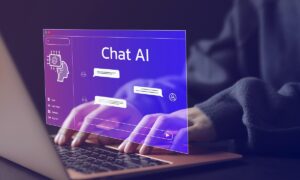PDF documents are the bane of any organization wanting to establish efficient workflows. While the password protection feature is helpful, this format has serious flaws, including an inability to edit or easily highlight or make other changes.
However, AI tools are changing the nature of the game. Intelligent software is taking the PDF format and turning it on its head, enabling new functionality that companies will love.
Apryse is a software company currently dabbling in this area. It says that the world of work is not ready for what’s coming.
“We think AI is going to transform PDF and other forms of unwieldy text documents, making it more straightforward for developers to turn them into regular productivity suites,” it claims. “The sheer range of tools available today is staggering, and AI is opening up possibilities that simply aren’t available in standard word processing packages. It really is quite spectacular.”
But what are these software firms so excited about? The main benefit, as they see it, is that AI can “think” solutions into existence natively instead of relying on a human to concoct them for it. Essentially, this means that AIs can come up with their own solutions to getting work done on PDFs, just as a person might when writing with a pen and paper. If something doesn’t work, the machine can try something new.
“We are already seeing intelligent software being used to permit intelligent annotation inside PDF documents,” Apryse says. “However, you can imagine that going much further in the future.”
The big change is the development of agentic AIs. Unlike conventional systems, these don’t require constant prompting to get them to do what you want. Instead, you provide them with a task and they get on with it, doing the best they can based on the guardrails you install.
This technology is already on the desktop. Agentic AIs can perform various point-and-click operations, combined with writing. For example, you can tell agentic AIs to search the internet for information on the best places to travel in the south of France and then get it to open your email client and email 10 of your closest contacts a summary of your choices without having to press a button. That sort of technology is also coming to PDFs to make them more readable.
Let’s take a look at some of these capabilities in more depth.
Better Accessibility

AI is also improving accessibility for PDFs. Tools can now convert documents into speech and audio descriptions, enabling more people to understand their contents.
These text-to-speech services are improving as AI’s understanding of the world grows. Tools can now describe tables and images at a level of detail that was impossible in the past.
Even braille is now making an appearance at the intersection of AI and PDFs. The software can transform unstructured text and images into a descriptive braille output that users can leverage to gain a broad or detailed understanding of the contents.
Improved Selection
Another AI-related benefit is improved selection within PDF documents. Tools can now select large areas of text, avoiding picking anything that the user doesn’t want to highlight.
“The development of these tools for developers has only been possible in the last few years,” Apryse says. “Before, users had to make do with selecting things in square boxes, which often meant that they wound up lighting things they didn’t want to. But now, more advanced AI technology is eliminating those productivity bottlenecks and enabling a much more advanced service. You can literally draw the text you want to select on the screen, avoiding any existing sections you don’t want to select.”
Editing Text
It is also becoming possible to edit PDF text in much the same way as you would a word-processing document, again thanks to the power of AI. These tools use visual learning techniques to recognize various words on the page, enabling them to recreate the content in an existing tool. It also permits the restructuring of the layout of PDFs inside the Adobe Reader for an experience that feels a lot like Microsoft Word.
What’s so impressive about these new technologies is that they appear to understand PDFs in much the same way that we do. Instead of seeing them as opaque documents with unintelligible source code, it sees them for what they are, as we do, and uses that information to make inferences or determine the next step.
Analyzing PDF Data
Finally, AI is making extracting and analyzing PDF data infinitely more tractable. Gone are the days when data entry professionals had to spend hours pulling information from these documents and typing them into other ones.
“This reduction in rote work is something we think is exciting about AI and PDF documents going forward,” says Apryse. “You can quickly and easily copy a table from Excel into Word and vice versa with just a few clicks, but it is much more challenging to do the same with a PDF document. However, we are already seeing productivity improvements in this regard that could be worth billions to the economy as a whole.”
AI And PDFs: A Match Made In Heaven?
Ultimately, AI is going to transform the PDF experience, freeing up workers’ time and making the format more user-friendly. Personal assistants embedded into these documents will carry out your every whim, perhaps with prompts, while helpful APIs in the background will do all the legwork of actually editing these documents and preparing them to the highest standards.



































